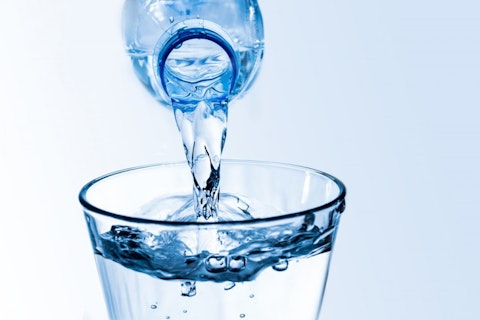Unfortunately, a large percentage of the global population is, even in this day and time, deprived of basic necessities, as is evident from the countries with least access to clean water.
We may take clean water as granted, but sadly for some, it is a rare commodity. Just the fact that at least 2 billion people in the world drink water from a source corrupted by fecal matter gives me goosebumps. Surprised? Wait, there’s more. Even health care facilities in poor countries do not have a proper source of water. 38% of such facilities to be exact, meaning that even patients aren’t privileged enough to be able to acquire safe water easily. It’s no wonder that 15% of patients in the world suffer an infection while at a hospital. The Earth surely seems to be hard-pressed in the water department what with the lack of clean water, coupled with the anxiety that many countries will probably run out of water in the next 20 years. Not to mention that unsafe water is extremely injurious to health, causing diseases like severe diarrhea. In fact, countries with low access to clean water have extremely high infant mortality rates. Coincidence? Obviously not.
So before we move on to our water poor countries list, let’s consider how many countries don’t have clean water at all? Well, no nation is that far gone. On the bright side, there definitely are some places whose entire population is fortunate enough to possess improve drinking water sources, according to the World Health Organization (WHO). These nations include the United Kingdom, Sweden, Japan and approximately thirty-three more states who have the honor of being called the countries with the most access to safe drinking water.

Artem Varnitsin/Shutterstock.com
In order to find out which are the countries with least access to clean water, first we are going to clarify what exactly we mean by safe water. Well, according to WHO, from where we have constructed our list and ranked countries based on the percentage of their population using improved drinking water sources, an improved drinking water source is one which “by nature of its construction and design, is likely to protect the source from outside contamination.” Interestingly, bottled water alone, unaccompanied by any other source, is not considered an improved water source by WHO, even though some large bottled water companies, which include the 10 largest bottled water companies in the world and top 10 healthiest bottled water in the world, provide very safe and healthy water. Well, this is just because bottled water is not readily available at homes, and WHO only takes into account water located on premises.
It is ironic that countries like China, USA and India that are actually the top culprits when it comes to producing water pollution are also the ones with one of the best water supplies, while countries with the worst water pollution in the world have ended up on our list as they do not have the funds to invest in the infrastructure they need for better water sources. This fact is more than unfortunate, as drinking unsafe water can cause severe illnesses like cholera, hepatitis A, and even polio. Maybe contaminated water is one of the reasons the world cannot seem to get rid of polio, a disease that the US has been free of since 1979!
So it’s no shocker that countries with least access to clean water are low-income or middle-income ones. In fact, ten of the thirteen countries on our list are from Africa. Sadly, the last available data from WHO is from December 2015, so we can’t really pinpoint the countries without clean water in 2017, but statistics are not likely to change much in a span of 2 years. Let’s finally list them down:





